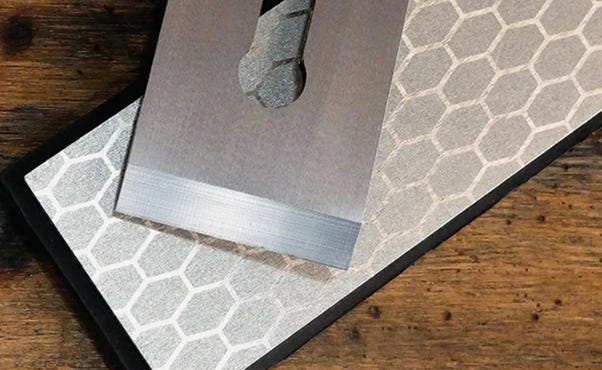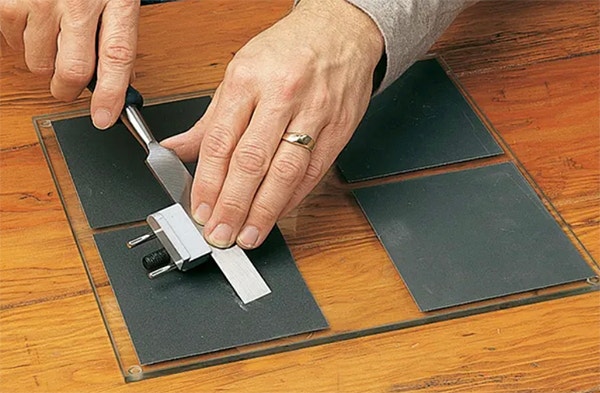Sharpening Your Tools: Five Fast Facts
Categories:
Workshop Setup & Tool Maintenance
May 09, 2024

Sharpening is metalworking, not woodworking, and as such, some woodworkers avoid the task until they just can't.
But sharp tools, such as chisels, gouges and plane irons, are a pleasure to use, are more accurate and can even be safer to use. So here are five tips that will help you sharpen tools with a game plan for better success.
1.
The perfect cutting edge would be infinitely thin and infinitely smooth. As that is impossible, all the other cutting edges we form are some sort of compromise of that relationship. Cutting edges that are too thin are easily damaged and lose their smoothness. And, even if you polish a broad edge to a mirror image, the wood fibers will still be crushed rather than sliced.2.
Unless you are well-versed in metal grinding and know something about cutting edge theory, you are best served by keeping the "factory" grind angle on your tools. There are, of course, exceptions to every rule, but it is more likely that you will degrade the performance of your tool by guessing at "improvements" on the grinding angle of your chisel or gouge.3.
There is no single best way to sharpen tools — a lot of systems and machines will deliver great results. The best thing you can do is decide on what works best for you, and then practice. A glass plate and sandpaper system (photo below) is a great way to get started with sharpening. A slow-speed grinder and sharpening jig system (video below) makes it fast and easy to sharpen your tools. Waterstones also work well for sharpening chisels, hand plane irons, and knives. Your success with any sharpening system depends more on practice than on finding the "perfect" sharpening system. Just find the one that's perfect for you.
4.
Jigs and guides are your friends. Fixtures that help you keep your tools properly aligned while grinding, whether they are shop-made or purchased, can make a huge difference. Pairing a grinding and honing jig with a slow-speed grinder great way to get consistently accurate bevels on your chisels and hand plane irons. Learn more in the video below. If you're a woodturner, then a Oneway Wolverine Grinding Jig works well when sharpening turning gouges.VIDEO: How to Sharpen Tools with the Rockler Grinding and Honing Jig
5.
Grinding and honing are two different things. Grinding is when you remove a "significant amount" of steel using an abrasive surface of some sort (most commonly, a wheel). Honing is polishing a ground edge smooth. You can often hone an edge back to being super sharp without grinding. But once an edge has nicks or distortions, you’ll need to grind those imperfections completely away.Keep the inspiration coming!
Subscribe to our newsletter for more woodworking tips and tricks




